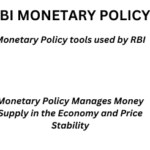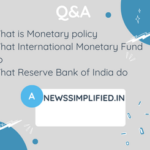SHAKTIKANTA DAS APPOINTED AS THE NEW RBI GOVERNOR

Former economic affairs secretary Shaktikanta Das was named the 25th governor of the Reserve Bank of India (RBI) to succeed Urjit Patel.The appointment will be for three years.
LEARNING WITH TIMES
The Reserve Bank of India is the supreme monetary and banking authority in the country. It keeps the cash reserve of all scheduled banks and hence is known as Reserve Bank. It was established on April 1, 1935 . Though originally privately owned, since nationalisation in 1949, the Reserve Bank is fully owned by the Government of India. Its main function includes; formulate, implements and monitors the monetary policy, prescribes broad parameters of banking operations within which the country’s banking and financial system functions, Manages the Foreign Exchange Management Act, 1999, Issues and exchanges or destroys currency and coins not fit for circulation, Banker to the Government: performs merchant banking function for the central and the state governments; also acts as their banker. RBI Governor SHAKTIKANTA DAS
MONETARY POLICY: Monetary policy is the macroeconomic policy laid down by the central bank. It involves management of money supply and interest rate and is used by the government of a country to achieve macroeconomic objectives like inflation, consumption, growth and liquidity. Monetary policy can be expansionary and contractionary in nature. Increasing money supply and reducing interest rates indicate an expansionary policy. The reverse of this is a contractionary monetary policy.
MONETARY POLICY TOOLS
To control inflation, the Reserve Bank of India needs to decrease the supply of money or increase cost of fund in order to keep the demand of goods and services in control.
QUANTITATIVE TOOLS
The tools applied by the policy that impact money supply in the entire economy, including sectors such as manufacturing, agriculture, automobile, housing, etc.
Reserve Ratio:
Banks are required to keep aside a set percentage of cash reserves or RBI approved assets. Reserve ratio is of two types:
Cash Reserve Ratio (CRR)- (CRR) is the share of a bank’s total deposit that is mandated by the Reserve Bank of India (RBI) to be maintained with the latter in the form liquid cash.
Statutory Liquidity Ratio (SLR) – Banks are required to set aside this portion in liquid assets such as gold or RBI approved securities such as government securities. Banks are allowed to earn interest on these securities, however it is very low.
Open Market Operations (OMO):
In order to control money supply, RBI buys and sells government securities in the open market. These operations conducted by the Central Bank in the open market are referred to as Open Market Operations.
When RBI sells government securities, the liquidity is sucked from the market, and the exact opposite happens when RBI buys securities. The latter is done to control inflation. The objective of OMOs are to keep a check on temporary liquidity mismatches in the market, owing to foreign capital flow.
QUALITATIVE TOOLS
Unlike quantitative tools which have a direct effect on the entire economy’s money supply, qualitative tools are selective tools that have an effect in the money supply of a specific sector of the economy.
Margin requirements – RBI prescribes a certain margin against collateral, which in turn impacts the borrowing habit of customers. When the margin requirements are raised by the RBI, customers will be able to borrow less.
Moral suasion – By way of persuasion, RBI convinces banks to keep money in government securities, rather than certain sectors.
Selective credit control – Controlling credit by not lending to selective industries or speculative businesses.





0 Comments